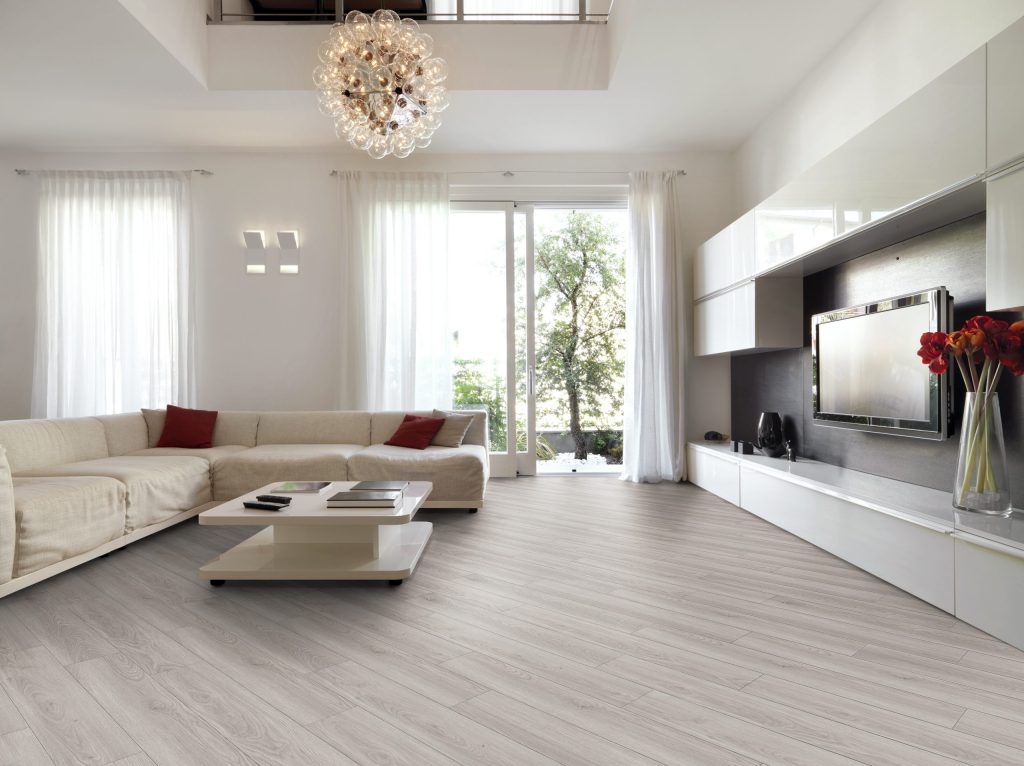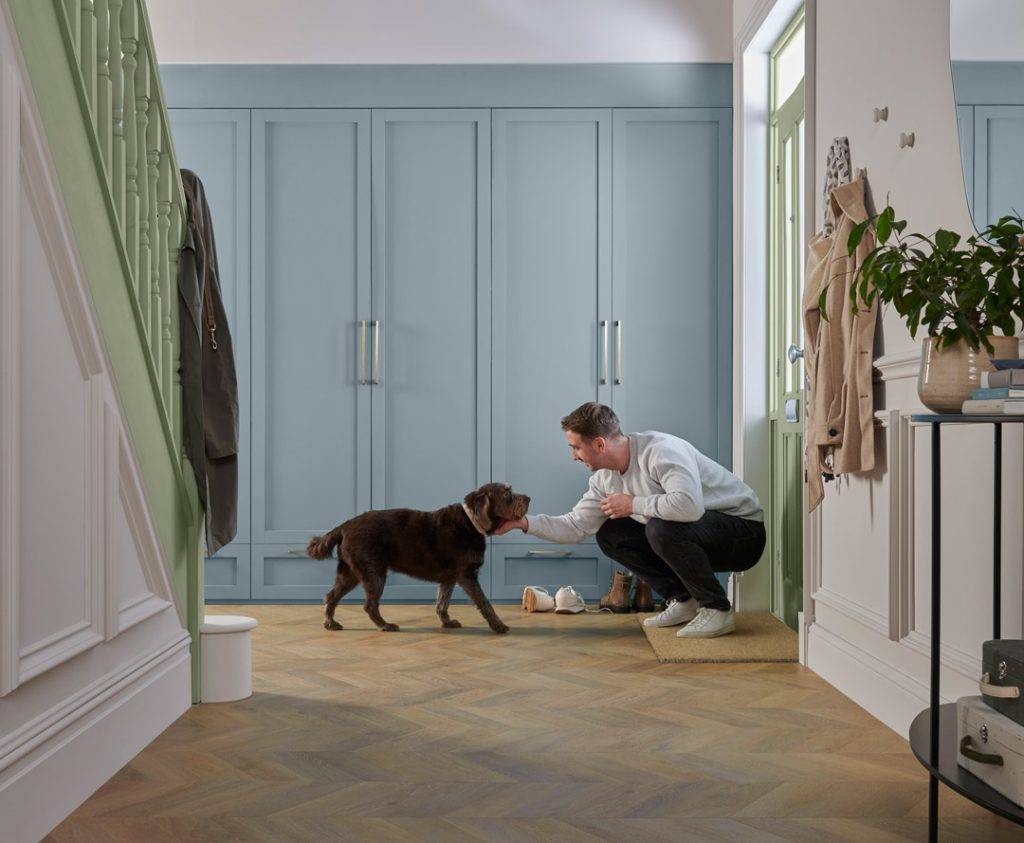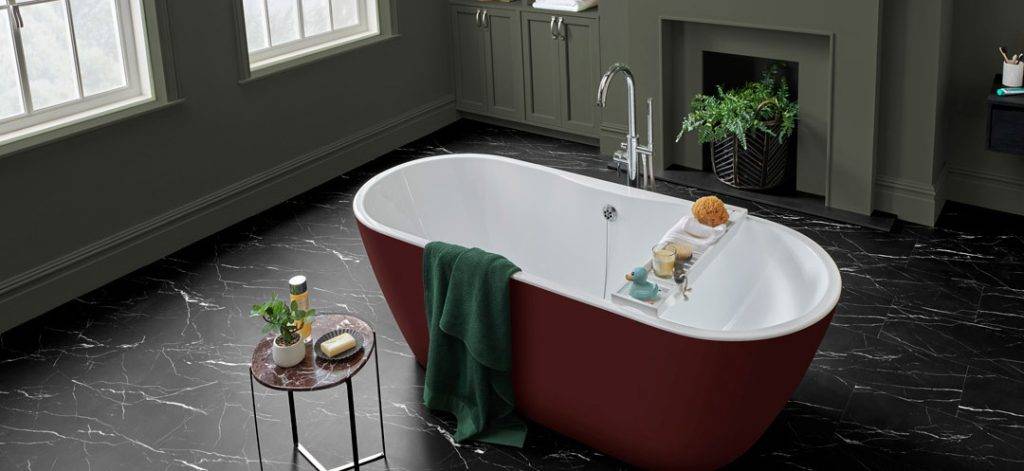LVT is a highly adaptable material with a huge array of technical benefits. It has high water resistance, a wide array of aesthetics on offer, and is warm, comfortable underfoot, and much more besides. Luvanto has made a blog on how great LVT is, demonstrating why it’s becoming one of the most popular flooring choices on the market.
One aspect that isn’t often explored, however, is the added extras available alongside the product itself. There are multiple things you can do with LVT to truly enhance its place in your home, and one of them is underfloor heating.
Below we’ll explore the use of underfloor heating with LVT, as well as the benefits and possible drawbacks.
The Benefits of Underfloor Heating
Underfloor heating works by turning your entire floor into one big (yet low-temperature) radiator. It does this in one of two ways:
- Water – This style of heating incorporates a network of pipes through which warm water travels.
- Electric – This style of heating incorporates wires and/or heating pads that are heated electronically.
Before we go over LVT’s compatibility with Underfloor Heating, let’s talk about the specific benefits that underfloor heating can give to your home.
Comfort
The biggest draw with customers is the amazing comfort it offers. Having the heat come from below rather than the traditional radiators ensures that your room is not only getting a more “even” spread of heat but also makes every step comfortable. No more will you have to suffer that feeling of a cold floor sending chills up your body. This invention isn’t exactly new but is still rare enough that the sophistication alone not only gives you immense satisfaction but is likely to also impress your guests.
Energy Efficiency
When compared to traditional heating methods, underfloor heating has proven to be highly efficient in the amount of energy it uses. For radiators to spread their heat across a room, it has to reach a high temperature to radiate it out. On the other hand, underfloor heating uses a much lower temperature to achieve the same level of warmth over a period of time. This makes underfloor heating efficient and it’s sure to result in a much lower energy bill if it were to take over as the main heating method in your home.
Convenience
The underfloor heating can be controlled through thermostats within each room, allowing you to manage and customise the exact amount of heat you want in the home.
Underfloor heating is also completely silent. The lack of a radiator also increases the amount of space you have within the home, as well as improving the air quality by avoiding the dust circulation that sometimes happens within convection radiators.
LVT Flooring and Underfloor Heating Compatibility
LVT’s functionality far outmatches most flooring. When it comes to underfloor heating, we honestly believe that no floor is more suited than LVT. We’ll explain why below.
Damage Resistance
LVT is constructed from several layers of synthetic materials. To meet British Standard guidelines of resilient and textile floor coverings, underfloor heating systems should not exceed 27°C. Considering that it’s recommended to have a room temperature of 18-21 degrees, this makes it more than capable of withstanding heat without the material showing any discolouration or heat spots.
Warp resistance
Underfloor heating puts the floor in direct contact with heat, which puts it at risk of expansion and contraction if that flooring material is susceptible. Expansion could cause the flooring to push upwards in an unnatural way, often causing raised edges, discomfort and a detraction from aesthetics. This is more common on wooden floors.
This process is known as thermal expansion. Essentially, heat within the floor causes molecules within the flooring to move around. Strange as that sounds, the parts of the floor that move demand more space, which is when expansion occurs.
Whilst LVT does expand and contract in response to heat and cold respectively, it is much more stable than other organic hard floor coverings. This means that, depending on the type of LVT installed, either glued down which doesn’t move or floating click / drop lock systems that require an expansion gap, a proper installation of LVT will take account of the expansion that LVT undergoes during its encounter with heat.
Conduction
LVT has several layers that are bonded together tightly, making it highly dense for such a thin material. Nonetheless, this combination not only gives it strength but allows it to effectively conduct heat.
Heat has a much easier time going through thinner materials than thicker ones. As such, due to the thin nature of LVT, the heat more or less rises through the flooring with little in the way to stop it.
Underlayment and Underfloor Heating with Click / Drop Lock LVT Systems
The compatibility of these two features depends on the type of underlayment (sub floor preparation) you have. Underlayments each act as a layer of thermal resistance. As such, to use underlayment, you must have an underlayment designed with the following features:
- Thermal Conductivity – Underlayments must have a high thermal conductivity to function alongside heating effectively, otherwise it will block the underfloor heating method, causing a loss of efficiency.
- Moisture Resistance – Underlayment for underfloor heating must have moisture resistance where a water-based system is used, as none must be transferred to the underlayment, as this may cause damage to the LVT from beneath.
- Thickness – As previously stated, heat travels through thinner objects much easier than thicker ones. Thicker underlayment will result in less heat making it through the LVT flooring into your home. (Underlayments that are too thick or too soft can affect the stability of the floor, make it ‘spongey’ to walk on or cause issues with the joints, so it is advisable to always follow the manufacturers guidelines when choosing the right underlayment for your floor).
LVT & Underfloor Heating Conclusion
Thank you for reading our guide on Underfloor Heating with LVT.
The above is intended as a guide on Underfloor Heating with LVT. We hope it helps you make informed choices about any underfloor heating options you may have been considering with your LVT installation. Please note that some versions of LVT may not be compatible and must be researched. We wish you the best of luck with your home improvement journey.









